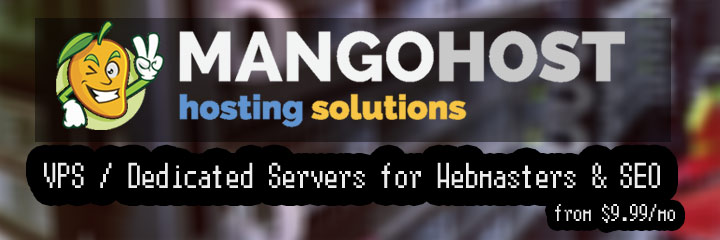
 Get the solution ↓↓↓
Get the solution ↓↓↓
I am in the creation of a functionality that allows loading XML files but before loading them I need to verify their content, I do not know if it is the correct way but I was thinking of something like first reading the XML to review its content and then validating it with the data that I have stored in a database table.
At the moment what I have developed so far is the loading of the XML file using AJAX and PHP as follows.
This is part of the form with which I load my XML files
<form action="" enctype="multipart/form-data">
<div class="form-group row">
<label for="fileToUpload" class="col-sm-3 col-form-label"> File XML:</label>
<div class="col-sm-8">
<input type="file" name="fileToUpload" id="XmlToUpload" class="btn" accept=".xml" required>
</div>
</div>
<div class="modal-footer">
<button type="button" class="btn btn-secondary" data-dismiss="modal">Cancel</button>
<button type="button" id="upload" class="btn btn-success">Upload Documents</button>
</div>
</form>Assuming the XML you shared is the actual XML passed to SQL Server, you are going to run into challenges with namespaces. They need to be declared in the XML and then again when querying for data.
Here's an example that returns the values for and{-code-2} as you have shared.
-- String holding the supplied XML.
DECLARE @my_xml varchar(MAX) =
'<?xml version="1.0" encoding="UTF-8"?>
<cfdi:Voucher Version="3.3" ="45264.13">
<cfdi:Issuer {-code-2}="ABC123456AB1" Name="JOHN DOE"/>
<cfdi:Concepts>
<cfdi:Concept UnitValue="93.80"></cfdi:Concept>
</cfdi:Concepts>
<cfdi:Plugin>
<tfd:Digital Version="1.1" />
</cfdi:Plugin>
</cfdi:Voucher>';
-- Remove the XML declaration and add the required namespaces via a "root" wrapper.
-- Note: You could use STUFF to place root after the declaration and keep it, but this was faster.
SELECT
@my_xml = REPLACE ( @my_xml, '<?xml version="1.0" encoding="UTF-8"?>', '' ),
@my_xml = CONCAT ( '<root xmlns:cfdi="uri" xmlns:tfd="uri">', @my_xml, '</root>' );
-- Return the values for and {-code-2}.
SELECT
t.c.value('declare namespace cfdi="uri"; (@)[1]', 'decimal(18,2)') AS ,
t.c.value('declare namespace cfdi="uri"; (cfdi:Issuer/@{-code-2})[1]', 'varchar(50)') AS {-code-2}
FROM ( SELECT CAST ( @my_xml AS xml ) AS xml_data ) AS x
CROSS APPLY x.xml_data.nodes( 'declare namespace cfdi="uri"; //root/cfdi:Voucher' ) t(c);
Returns
+ Assuming I understand your validation and requirements, you could adjust your stored procedure to accept your XML as a parameter and then do your validation/handling of it accordingly.
Here is an example for reference:
CREATE OR ALTER PROCEDURE [dbo].[sptest] (
@my_xml varchar(MAX)
)
AS
BEGIN
DECLARE
@rfc varchar(50), @qty int, @price decimal(18,2), @total decimal(18,2);
/*****************************************/
/* Fetch values for validation */
/*****************************************/
SELECT
@rfc = VTB.RFC AS 'RFC',
@qty = LRC.QTY AS 'QTY',
@price = PL.PRICE AS 'Price',
@total = (PL.PRICE * LRC.QTY) * 1.16 AS 'Total'
FROM PACKING AS RC
INNER JOIN VTABLE AS VTB
ON VTB.COLUMN = RC.INVOICE
INNER JOIN TRANS AS LRC
ON (LRC.PACKING = RC.RECID)
INNER JOIN PURCH AS PL
ON (PL.NUMBER =LRC.NUM and PL.PURCH =RC.PURCH)
/*****************************************/
/* Fetch XML values to validate */
/*****************************************/
DECLARE
@x_rfc varchar(50), @x_total decimal(18,2);
-- Remove the XML declaration and add the required namespaces via a "root" wrapper.
-- Note: You could use STUFF to place root after the declaration and keep it, but this was faster.
SELECT
@my_xml = REPLACE ( @my_xml, '<?xml version="1.0" encoding="UTF-8"?>', '' ),
@my_xml = CONCAT ( '<root xmlns:cfdi="uri" xmlns:tfd="uri">', @my_xml, '</root>' );
-- Return the values for Total and Rfc.
SELECT
@x_total = t.c.value('declare namespace cfdi="uri"; (@Total)[1]', 'decimal(18,2)'),
@x_rfc = t.c.value('declare namespace cfdi="uri"; (cfdi:Issuer/@Rfc)[1]', 'varchar(50)')
FROM ( SELECT CAST ( @my_xml AS xml ) AS xml_data ) AS x
CROSS APPLY x.xml_data.nodes( 'declare namespace cfdi="uri"; //root/cfdi:Voucher' ) t(c);
/*****************************************/
/* Validate and handle XML */
/*****************************************/
IF @rfc = @x_rfc AND @total = @x_total BEGIN
-- Validation Success --
-- Insert your XML to database...
END ELSE BEGIN
-- Validation Failure --
-- Throw and error or whatever you need...
END
END
GO
I am making a lot of assumptions here (like both your XML and SELECT contain only a single record), but it should get you moving forward.
Since you want to validate the xml data first with the data stored in database so instead of moving the xml file to a permanent location, I would suggest you to read the file and get the values of required fields which you want to validate. To get the values from xml file, You'll have to use any PHP provided XML library likeDOMDocument,XMLReader,SimpleXML or you can use this XML2Array to convert xml to an associative array to easily get the value
if (isset($_FILES["XmlToUpload"])) {
// Create a unique filename
$fileName = $_FILES["XmlToUpload"]["name"];
$ext = pathinfo($fileName, PATHINFO_EXTENSION);
$archivo = uniqid($fileName, true);
$ruta ="XML/";
$xmlData = file_get_contents($_FILES['XmlToUpload']['tmp_name']);
$arr = XML2Array::createArray($xmlData);
//Check whether this array contains the required keys or not i.e. Total & Rfc
if (! isset($arr['cfdi:Voucher']['@attributes']['Total'])) {
echo "Error";
exit();
}
$totalAmount = $arr['cfdi:Voucher']['@attributes']['Total'];
if (! isset($arr['cfdi:Voucher']['cfdi:Issuer']['@attributes']['Rfc'])) {
echo "Error";
exit();
}
$rfc = $arr['cfdi:Voucher']['cfdi:Issuer']['@attributes']['Rfc'];
// Validating $totalAmount & $rfc with the data in database
// Connect to database (Sql Server)
$serverName = "serverName\\sqlexpress";
$connectionInfo = array( "Database"=>"dbName", "UID"=>"userName", "PWD"=>"password");
$conn = sqlsrv_connect( $serverName, $connectionInfo);
if ($conn === false) {
die( print_r( sqlsrv_errors(), true));
}
$sql = "Select VTB.RFC as 'RFC',
LRC.QTY as 'QTY',
PL.PRICE as 'Price',
(PL.PRICE *LRC.QTY) * 1.16 as 'Total'
from PACKING RC
inner join VTABLE VTB on VTB.COLUMN = RC.INVOICE
inner join TRANS LRC on (LRC.PACKING = RC.RECID)
inner join PURCH PL on (PL.NUMBER =LRC.NUM and PL.PURCH =RC.PURCH)
where VTB.RFC = ? AND ((PL.PRICE * LRC.QTY) * 1.16) = ?";
$params = array($rfc, $totalAmount);
$options = array( "Scrollable" => SQLSRV_CURSOR_KEYSET );
$stmt = sqlsrv_query( $conn, $sql, $params, $options);
$row_count = sqlsrv_num_rows( $stmt );
if ($row_count === false) {
echo "Error";
} else {
if(move_uploaded_file($_FILES["XmlToUpload"]["tmp_name"],$ruta.$archivo)){
echo "Successfully uploaded";
}else{
echo "Error";
}
}
} else {
echo "A file was not selected";
}
Our community is visited by hundreds of web development professionals every day. Ask your question and get a quick answer for free.
Find the answer in similar questions on our website.
Do you know the answer to this question? Write a quick response to it. With your help, we will make our community stronger.
PHP (from the English Hypertext Preprocessor - hypertext preprocessor) is a scripting programming language for developing web applications. Supported by most hosting providers, it is one of the most popular tools for creating dynamic websites.
The PHP scripting language has gained wide popularity due to its processing speed, simplicity, cross-platform, functionality and distribution of source codes under its own license.
https://www.php.net/
JavaScript is a multi-paradigm language that supports event-driven, functional, and mandatory (including object-oriented and prototype-based) programming types. Originally JavaScript was only used on the client side. JavaScript is now still used as a server-side programming language. To summarize, we can say that JavaScript is the language of the Internet.
https://www.javascript.com/
HTML (English "hyper text markup language" - hypertext markup language) is a special markup language that is used to create sites on the Internet.
Browsers understand html perfectly and can interpret it in an understandable way. In general, any page on the site is html-code, which the browser translates into a user-friendly form. By the way, the code of any page is available to everyone.
https://www.w3.org/html/

Welcome to the Q&A site for web developers. Here you can ask a question about the problem you are facing and get answers from other experts. We have created a user-friendly interface so that you can quickly and free of charge ask a question about a web programming problem. We also invite other experts to join our community and help other members who ask questions. In addition, you can use our search for questions with a solution.
Ask about the real problem you are facing. Describe in detail what you are doing and what you want to achieve.
Our goal is to create a strong community in which everyone will support each other. If you find a question and know the answer to it, help others with your knowledge.